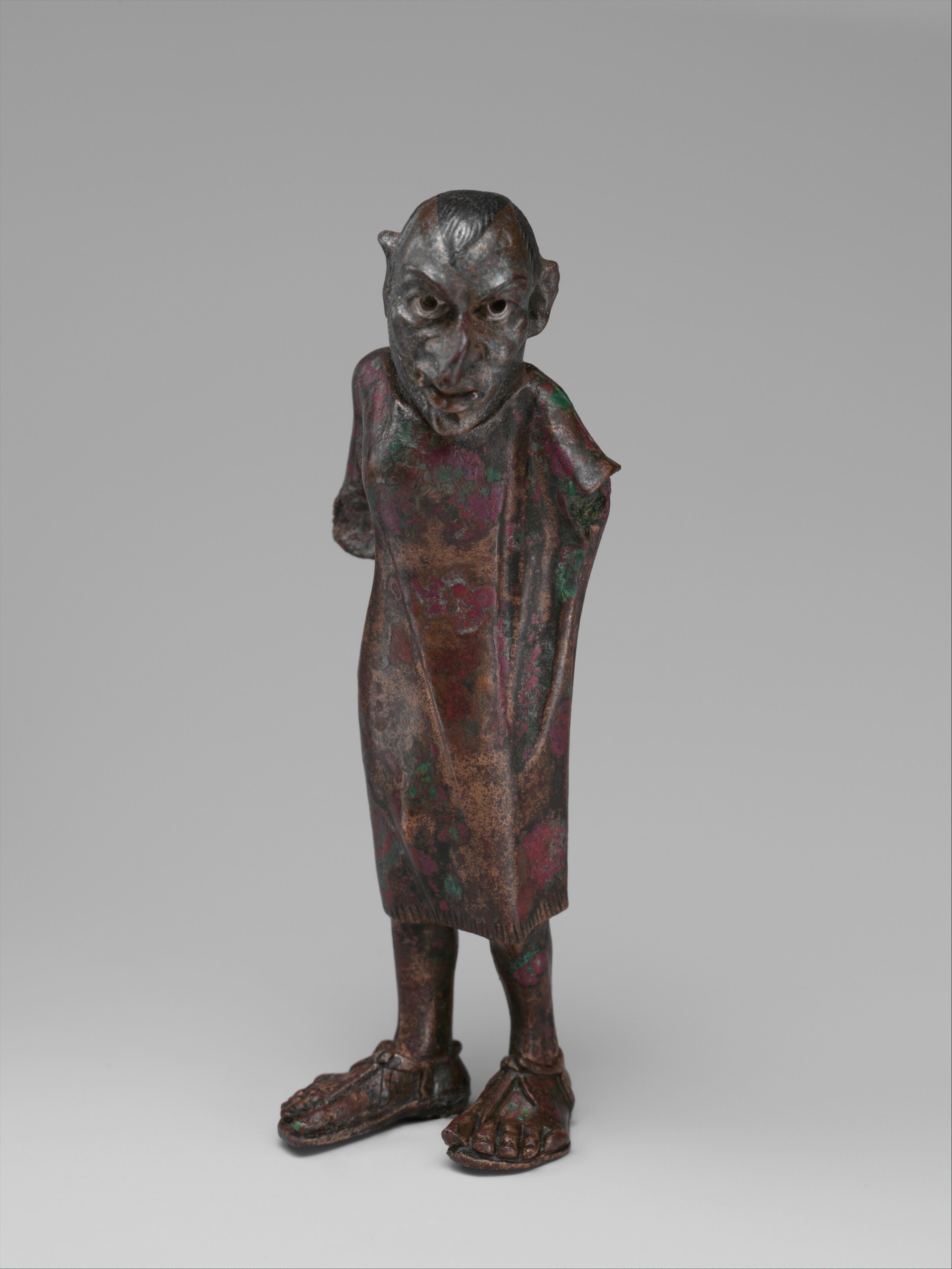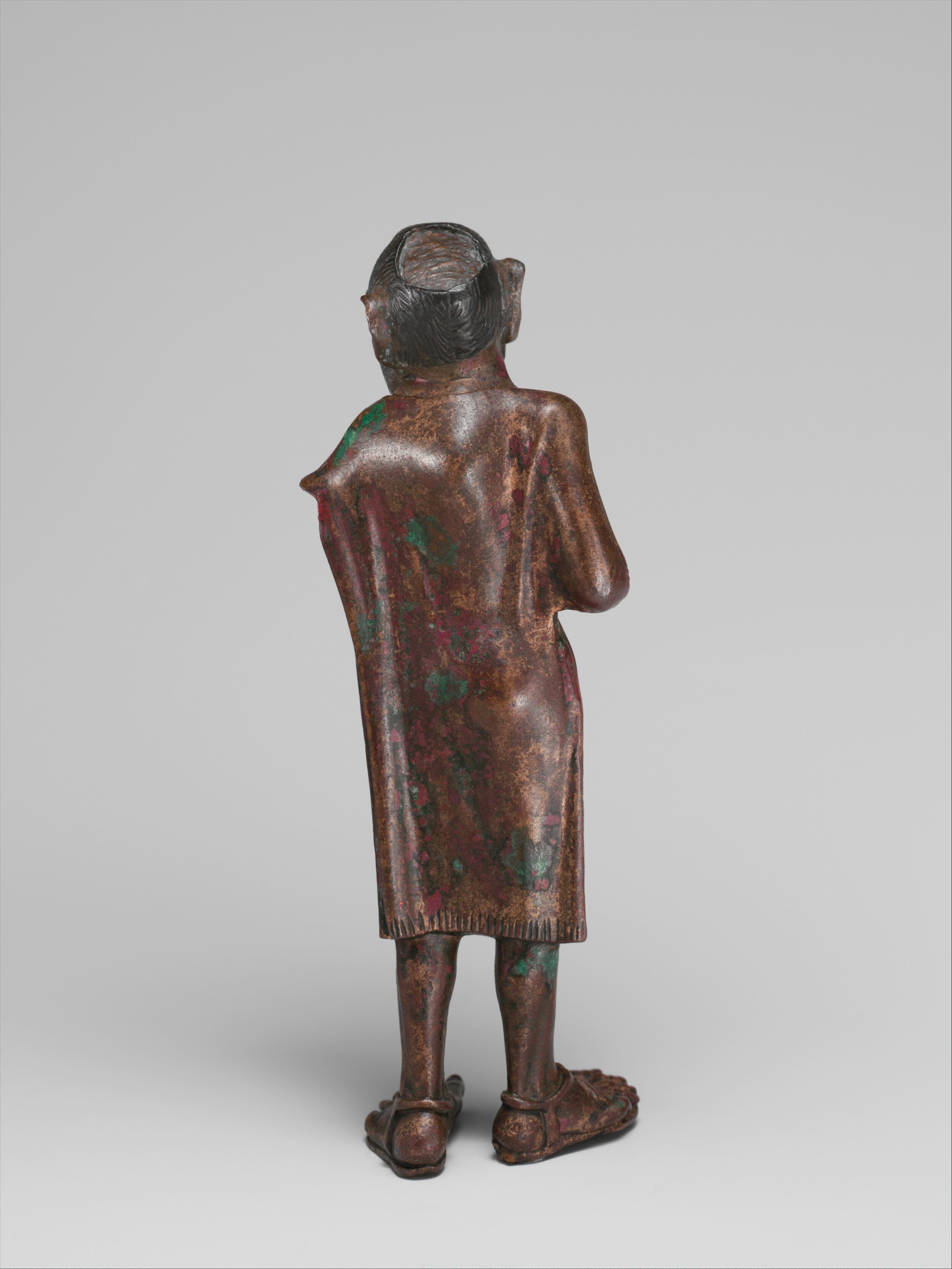Since its discovery in 1727, this figure's identity has been debated.
His disproportionately large head has a prominent nose, canines and whites of the eyes originally inlaid in silver, and hair and a beard once rendered in a matte black metal inlay. The circular area on the back of his head may have been for an attached curl of hair. The close-fitting garment reveals his misshapen body, and he wears sandals. Prevailing scholarly opinion has called the figure a mime and dated it to the first century B.C./A.D. A recent suggestion is that he is a caricature of an Alexandrian pedant, datable in the early second century B.C.
Source: metmuseum










